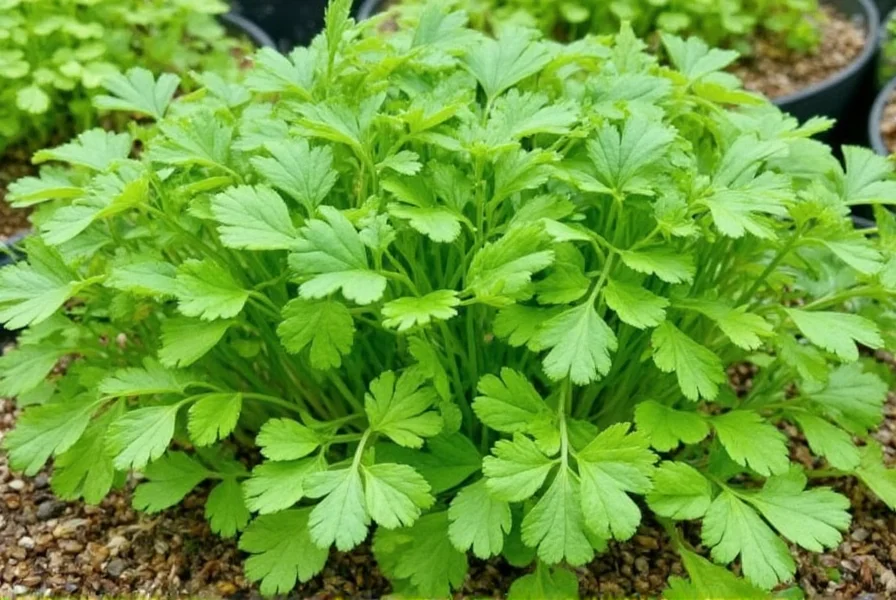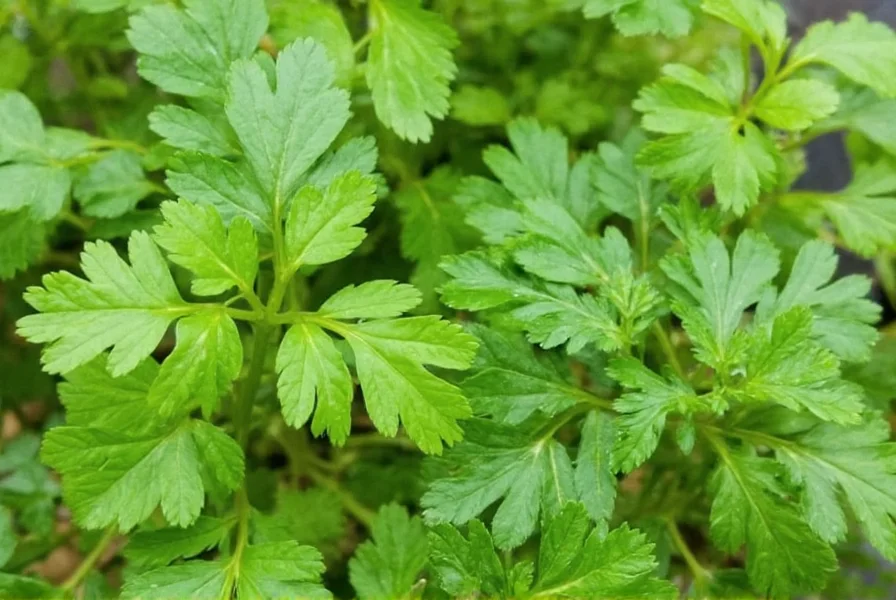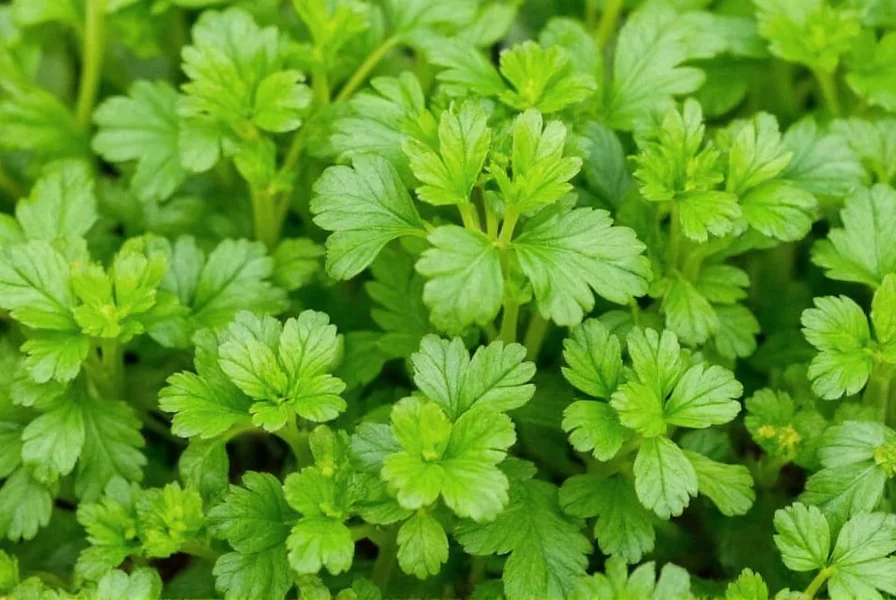Many gardeners don't realize they're already holding the solution to fresh cilantro in their spice cabinet. Those small round seeds labeled “coriander” in your pantry are actually cilantro seeds, ready to transform into the vibrant herb you love in salsas and salads. Understanding this simple botanical fact eliminates confusion and opens the door to a continuous supply of fresh cilantro right from your garden or windowsill.
Understanding the Cilantro-Coriander Connection
Before diving into cultivation, it's essential to clarify the terminology. Coriandrum sativum produces both the leafy herb (cilantro) and the round seeds (coriander). The seeds you purchase as “coriander” are matured fruits of the cilantro plant, perfectly viable for growing new plants. This dual-identity often causes confusion, but recognizing they're the same plant simplifies your gardening approach.
Essential Materials for Successful Cilantro Growth
Starting cilantro from coriander seeds requires minimal equipment but specific conditions for optimal results. Gather these essentials before planting:
| Item | Purpose | Recommended Specifications |
|---|---|---|
| Coriander seeds | Planting material | Fresh, preferably within 1 year (germination drops significantly after 2 years) |
| Container | Root development | At least 8-10 inches deep with drainage holes |
| Soil mix | Nutrient base | Light, well-draining potting mix with pH 6.2-6.8 |
| Watering can | Moisture control | With fine rose attachment for gentle watering |
| Grow lights (optional) | Supplemental lighting | Full spectrum LED for indoor growing during short daylight months |
Step-by-Step Planting Process
Follow these precise steps for successful cilantro cultivation from coriander seeds:
- Seed preparation: Gently crush coriander seeds between your fingers to split the husk, improving germination rates by 30-40%. Soak in room-temperature water for 24 hours before planting.
- Soil preparation: Fill containers with moistened potting mix, leaving 1 inch of space below the rim. Create shallow 1/4-inch deep furrows spaced 6 inches apart.
- Planting: Place 2-3 seeds every inch along the furrows, covering lightly with soil. Water gently until soil is evenly moist but not saturated.
- Germination environment: Maintain consistent soil temperature of 60-70°F (15-21°C). Cover with plastic wrap to retain moisture until sprouts appear.
- Thinning: When seedlings reach 2 inches tall, thin to 6-8 inches apart by snipping weaker plants at soil level (never pull).

Optimal Care Requirements
Cilantro thrives with specific care routines that prevent common problems like premature bolting (flowering):
Light Requirements
Cilantro needs 4-6 hours of direct sunlight daily. In hot climates (above 85°F/29°C), provide afternoon shade to prevent bolting. For indoor growing, use full-spectrum LED lights positioned 6-12 inches above plants for 10-12 hours daily.
Watering Techniques
Maintain consistent soil moisture—never allowing complete dryness but avoiding waterlogging. Water when the top inch of soil feels dry. During hot weather, check soil twice daily. Use room-temperature water to avoid shocking roots.
Temperature Management
Cilantro grows best between 50-85°F (10-29°C). Temperatures above 85°F trigger bolting. In warm climates, plant in partial shade or use mulch to keep roots cool. Consider growing cilantro in spring and fall rather than summer heat.
Common Growing Problems and Solutions
Address these frequent cilantro cultivation challenges proactively:
- Early bolting: Caused by heat stress or inconsistent watering. Solution: Plant successive crops every 2-3 weeks, provide afternoon shade, and harvest regularly to delay flowering.
- Yellowing leaves: Indicates overwatering or poor drainage. Solution: Reduce watering frequency and ensure proper drainage holes.
- Leggy growth: Results from insufficient light. Solution: Move to sunnier location or add supplemental lighting.
- Pest issues: Aphids occasionally attack cilantro. Solution: Spray with diluted soapy water (1 tsp mild soap per quart water) or introduce ladybugs.
Harvesting for Maximum Flavor and Yield
Proper harvesting techniques significantly extend your cilantro production:
- Begin harvesting when plants reach 6 inches tall, taking only the outer leaves first
- Use sharp scissors to cut stems just above a leaf node, never pulling leaves
- Harvest in the morning when essential oils are most concentrated
- Never remove more than one-third of the plant at once
- For continuous supply, plant new seeds every 3-4 weeks throughout the growing season
When flowers appear (indicating bolting), you have two options: allow seed production for future planting, or cut back the entire plant to 2 inches above soil to encourage new leaf growth. The latter approach often yields one additional harvest before the plant completes its lifecycle.

Advanced Techniques for Year-Round Cilantro
Extend your cilantro season with these professional methods:
- Succession planting: Sow new seeds every 2-3 weeks for continuous harvest
- Indoor winter growing: Maintain plants on a sunny windowsill with supplemental lighting
- Cold frame cultivation: Extend outdoor season by 4-6 weeks in both spring and fall
- Seed saving: Allow some plants to flower and produce seeds for next season's planting
For indoor growing during winter months, maintain humidity around 40-50% and provide 10-12 hours of full-spectrum light daily. Rotate containers regularly for even growth. Indoor plants typically yield smaller harvests but provide fresh cilantro when outdoor growing isn't possible.
Frequently Asked Questions
How long does it take to grow cilantro from coriander seeds?
Cilantro seeds typically germinate in 7-10 days under optimal conditions. You can begin harvesting leaves when plants reach 4-6 inches tall, usually 3-4 weeks after planting. The plant reaches full maturity in 45-70 days, depending on growing conditions and variety.
Why does my cilantro keep bolting too quickly?
Cilantro bolts (flowers prematurely) primarily due to heat stress (temperatures above 85°F/29°C) or inconsistent watering. Other factors include insufficient soil moisture, too much direct sun in hot climates, and planting in containers that are too small. To prevent bolting, plant in partial shade during warm months, maintain consistent soil moisture, and harvest regularly to encourage leaf production rather than flowering.
Can I grow cilantro indoors year-round?
Yes, you can successfully grow cilantro indoors year-round with proper conditions. Use a container at least 8 inches deep with drainage holes, place in a south-facing window receiving 4-6 hours of direct sunlight, or supplement with full-spectrum LED grow lights for 10-12 hours daily. Maintain consistent moisture and temperatures between 60-75°F (15-24°C). Indoor plants typically require more frequent harvesting to prevent bolting.
How do I prevent my cilantro from turning yellow?
Yellowing cilantro usually indicates overwatering or poor drainage. Ensure your container has adequate drainage holes and use a light, well-draining potting mix. Water only when the top inch of soil feels dry to the touch. Yellowing can also result from nutrient deficiency—apply a balanced liquid fertilizer at half strength every 3-4 weeks during active growth periods. Avoid using high-nitrogen fertilizers which can reduce flavor intensity.
Can I grow cilantro from store-bought coriander seeds?
Yes, you can grow cilantro from store-bought coriander seeds, but success depends on freshness. Whole coriander seeds typically remain viable for 2-3 years when stored properly, but germination rates decline significantly after the first year. For best results, use seeds purchased within the last year. Avoid roasted or heat-treated seeds, which won't germinate. Test viability by placing several seeds on a damp paper towel—if they sprout within 7-10 days, they're suitable for planting.











 浙公网安备
33010002000092号
浙公网安备
33010002000092号 浙B2-20120091-4
浙B2-20120091-4